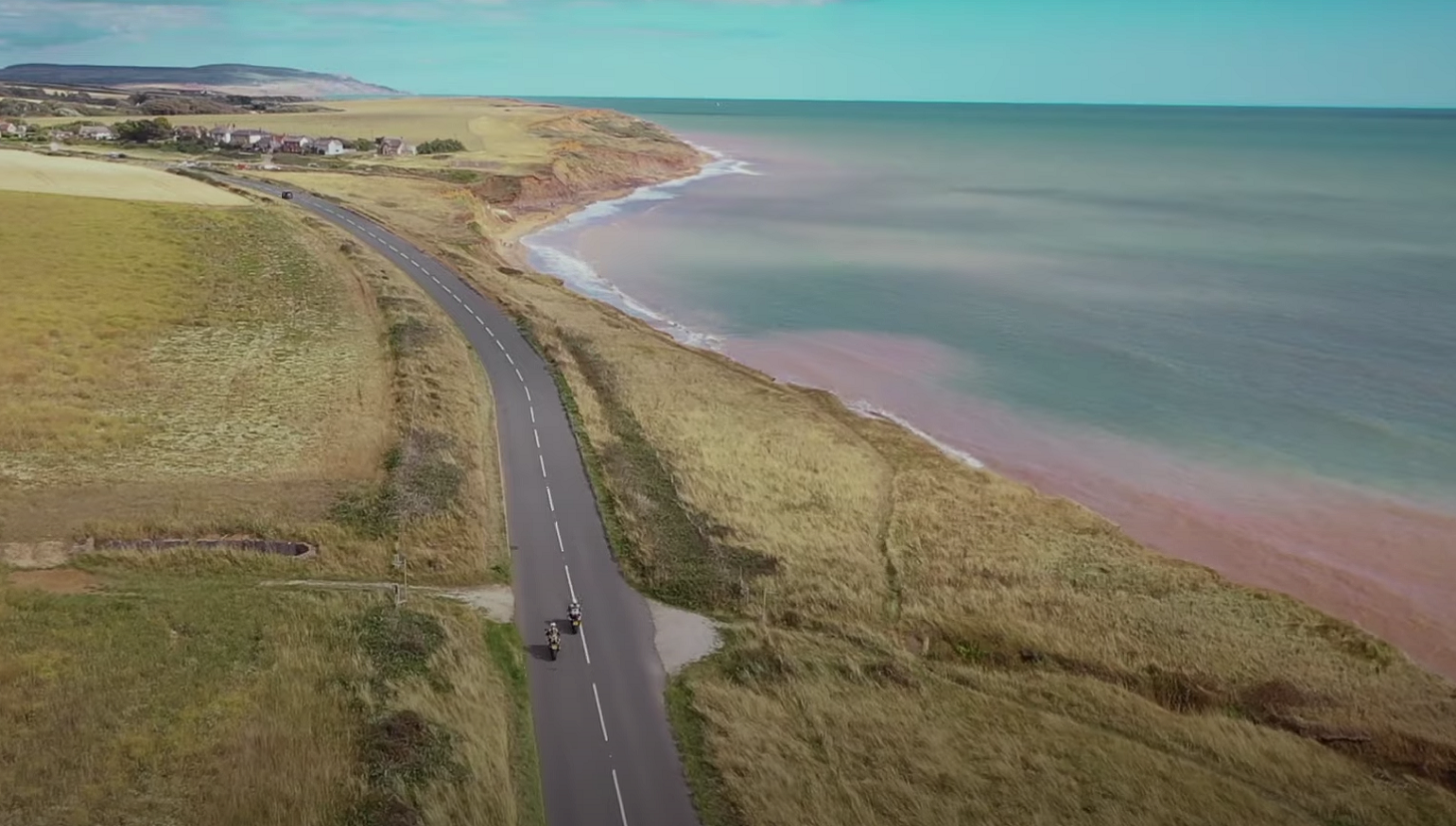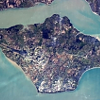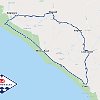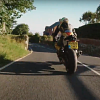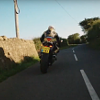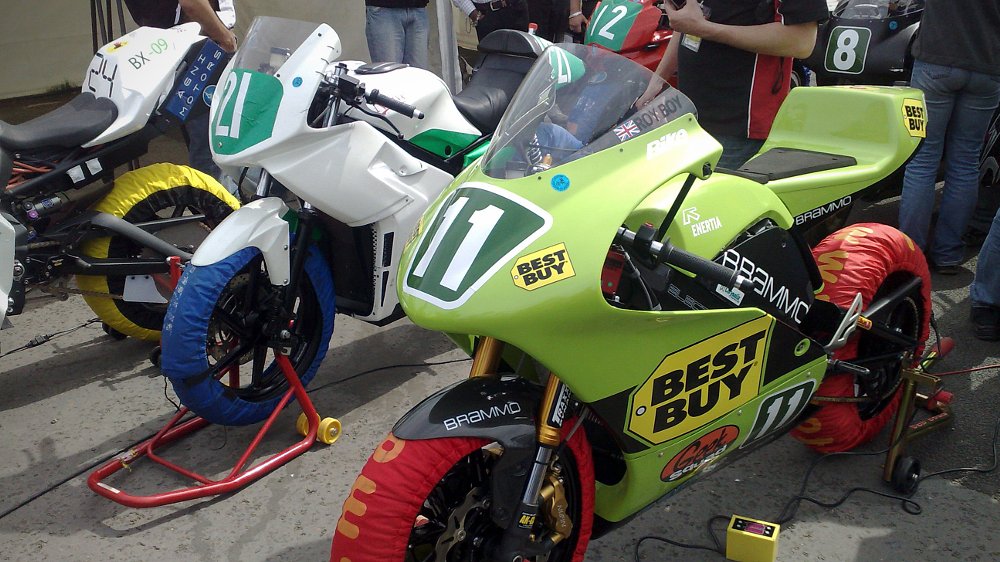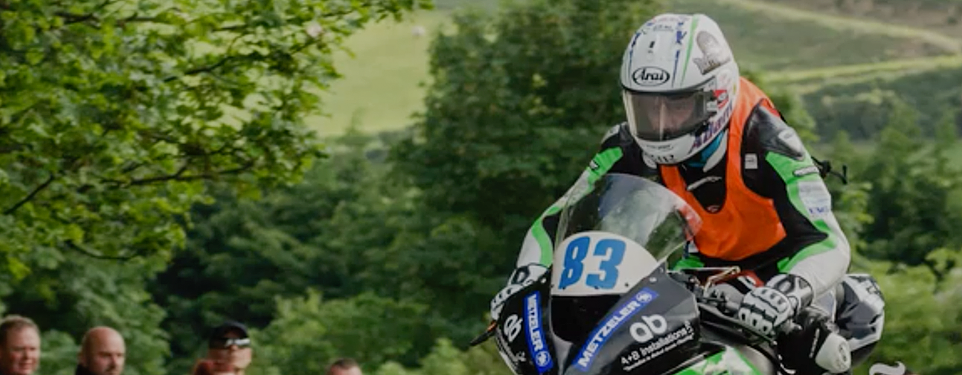There will be a significant new addition to the two-dozen or so motorcycle races held on closed-road courses. The “Diamond Races” will be held on the Isle of Wight in October, 2021. Several classes will race on a 12.4-mile course that, like the Isle of Man TT, mixes long wide-open straights with more technical sections, and which passes through a several picturesque villages.
The Isle of Wight is an island just off the southern coast of England, in the English Channel. It’s about one-third smaller than the Isle of Man in terms of land area, with a population about two-thirds larger. Most visitors arrive by ferry. By English standards, it has a mild climate and tourism has long been the dominant industry.
The island hosted a huge Woodstock-style music festival from 1968-70. Jimi Hendrix headlined that 1970 show, and the festival drew an estimated 600,000 people — roughly six times the island’s normal population. That was more than the local population could bear, but the festival was relaunched on a smaller scale in 2002 and has run continually since (although the 2020 edition was canceled due to the pandemic).

2020 was also supposed to be the first year for a new auto racing festival, the Isle of Wight Speed Trials. It was scheduled for March, just as cases of COVID-19 began to spike in Britain, so it was canceled. The island’s a home to one of the world’s largest annual scooter rallies. About 5,000 scooters typically arrive for the last weekend in August. Guess what? That’s been canceled, too.
So it’s just as well that the organizers of the new motorcycle races didn’t plan to start until the fall of 2021. At least the races might not be canceled before they’ve ever run.

Change to English law made racing possible
The UK Parliament’s Motor Car Act received royal assent in 1903. The Act included a blanket speed limit on English roads and effectively banned racing on public roads.
The Isle of Man, Ireland, and Northern Ireland were not governed by the Act, which explains why they became racing havens. Of the 25 events that counted towards the 2019 Duke Road Racing Rankings, only one was held in England. That was Oliver’s Mount; that event’s staged on real roads, but the entire circuit is technically inside a park and thus they’re not public roads.
However, the Auto-Cycle Union and the Motor Sports Association — the respective governing bodies for two- and four-wheel motor sport in the UK — led a lobbying effort to legalize racing on closed roads. The law was finally revised in 2017 and the Diamond Races on the Isle of Wight looks set to be the first new motorcycle event.

The Diamond Races look legit
It’s easy to be skeptical when it comes to announcements of new Isle of Man TT-style races on closed public roads. The last such announcement that I recall came back in the mid-2000s. TT star Ian Lougher and David Cretney, a member of the Isle of Man’s parliament, appeared at a press conference in Sydney, Nova Scotia, Canada to announce "The Cape Breton Festival of Speed," which was to be a sister event to the TT.
The event probably had the support of Cape Breton; the region was and is desperate for tourism development and frankly any source of revenue. But the government of the province of Nova Scotia was never on board. The Cape Breton Festival of Speed came to nothing.
The Diamond Races, however, already have the support of both the ACU and the local government on the Isle of Wight. British Dealer News recently quoted Dave Stewart, who is the cabinet member for strategic partnerships, as saying, “We have been working behind the scenes for quite some time now, looking into the feasibility of such a race meeting. We are committed to developing and expanding the island’s economy and this event is sure to attract visitors from the mainland and indeed northern Europe, which will help to extend the island’s tourist season and provide another boost to our economy in the final quarter of the year.”
The races are being promoted by two well connected Isle of Wight residents. James Kaye is an ex-British Touring Car Championship racing driver and had the initial idea of promoting a motorsport event. He then recruited Paul Sandford, who spent 13 years in the British Army, leaving in 1998 with the rank of Captain. He’s been a serial entrepreneur and business consultant ever since.
Those two considered and rejected other kinds of motorsport, including a Formula E race, and a BTCC event before settling on what Kaye calls, “a TT-esque” motorcycle race. In fact, while doing his due diligence, Kaye learned that there had been talk of holding motorcycle races on closed roads on the Isle of Wight in the 1930s and again in the ’70s.

The promoters got local government’s attention when they promised 50,000 tourists. That seems reasonable, considering that the Isle of Wight’s considerably easier to get to than the Isle of Man. Wight’s close to London and the Channel Tunnel, there are more frequent ferries, and the passages from Portsmouth and Southhampton are much shorter than the long, overbooked, and seasickness-inducing trips across the Irish Sea to the Isle of Man.
Sandford and Kaye have already recruited Gary Thompson, who as Clerk of the Course has executive authority over the Isle of Man TT. The team also includes Steve Plater (TT and BSB race winner, frequent TV commentator) and Neil Tuxworth (ex-Honda UK racing manager). Plater and Tuxworth are already at work recruiting riders.
Learning from the TT: Three classes, three days
Although a majority of Manx residents support the TT, there’s always been a sizable minority that would prefer it not happen; they resent the crowds, and especially the road closures. Last year, the TT schedule was severely constrained by exceptionally bad weather; many practice and race sessions were canceled and towards the end of the fortnight, they held five races on a single day. Lots of people on the Isle of Man appreciated fewer road closures.
The organizers of the Diamond Races will minimize the disruption for Isle of Wight residents by compressing practice and racing into just three days. The plan is to practice Wednesday and Thursday, take Friday off, then race Saturday. That schedule presumably allows them to push the racing back to Sunday in the event of bad weather, and still get many visitors home in time to go to work on Monday. (In late October, temperatures should be in the 50s. There’s typically rainfall about one day in three.)
For 2021, there will be racing in only three classes: Superbike, Supersport, and Lightweight (which, as per IoM rules, is for any four-stroke twin-cylinder motorcycle under 650 cc). They plan to put on a sidecar demonstration and hope to add a sidecar race class beginning in 2022. They’re considering an electric class at some point in the future.
Unlike the TT course, which runs right through the Isle of Man’s two largest towns, the Isle of Wight “Chale Course” (so named after the town of Chale, near the start/finish line) is set in the rural southern part of the island. This, again, should minimize the inconvenience of closed roads.
Thanks to Google street view and this video, even Americans who aren’t allowed to travel to the UK can take a virtual lap of the 12.4-mile Chale Course. TT star James Hillier’s already ridden it (at nominally legal speeds) and rates it highly.
The course is a bit bipolar. It begins with seven miles of undulating, technical, blind, narrow two-lane asphalt roads between hedges, through some woods and several small towns. I saw sections that reminded me of Black Dub, Glen Helen, and the exit of Kirkmichael on the TT course, but it will be a little slower, with a few more second-gear corners and even one or two spots that will call for first gear.
The course ends with nearly five miles on Military Road, which skirts the island’s south coast. Although it’s not dead straight, riders will be flat-out in sixth for all of it.

I’ll be interested to see how much attention is paid to the racing surface by road crews on the Isle of Wight. Many of the roads that make up the TT course have gently rounded race-style curbing, for example. Steve Plater says that roads on the Isle of Wight are already very good, but roads that seem excellent at legal speeds can be bumpy at race pace. Clerk of the Course Gary Thompson (speaking on the Bennetts Bikesocial video channel) says he’s already given the Isle of Wight government instructions about removing thousands of "cateye" reflectors on the course, and repainting road markings with grippier paint.
As at the TT, the Diamond Races will be time trials; racers will start one at a time and race against the clock. That’s probably the safest way to run a race on real roads, but it’s not the only way; the Ulster Grand Prix and many other such events use mass starts.
They said, “You couldn’t do it now”
When TT fans and racers get together, one sentiment’s often expressed: “You couldn’t do it now.” What they mean is, you could never hold a new race on closed roads in our cautious, 21st century culture. Regular fatalities are tolerated on the Isle of Man because that’s the way it’s always been. People accept the toll because they’re used to it.

That’s why I was surprised to learn that the Isle of Wight plans to stage a major new race on closed roads. Although I’m sure that the organizers are sanguine about the risks, and Kaye says that Isle of Wight council has agreed to run the races for 10 years, I wonder how the local government will respond to the first fatality.
Laying my own doubts about the Isle of Wight’s commitment to real road racing aside, there’s every chance the island — which has lots of experience hosting popular festivals — can put on a great end-of-season blowout for British racers and fans.
The Diamond Races’ four-day practice and racing schedule, and easier ferry access should mean that fans won’t have to blow as much money or as many vacation days to attend. It may even be possible to get hotel reservations.
The inaugural Diamond Races dates will not be final until next year’s British Superbike Championship dates are published. The races are expected to take place the week after the traditional BSB finale, which is held at Brands Hatch and usually takes place in mid to late October.
The island looks beautiful. However, even if you can’t make it, James Kaye says there will be a Diamond Races app that will allow anyone to follow the action from anywhere in the world.

 Membership
Membership

